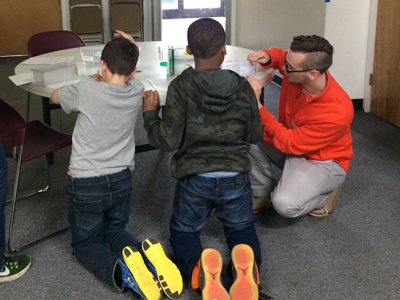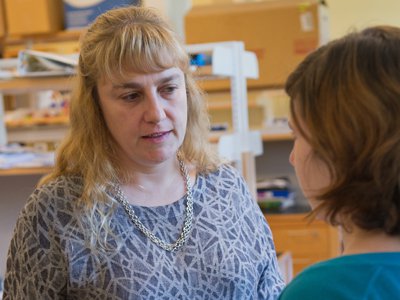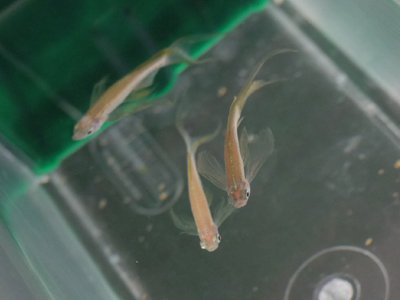Zebrafish Program Goes Swimmingly
Biologists bring zebrafish to Westcott Community Center

Local elementary and middle school students dove head first into science with help from Syracuse biologists—and a few fishy friends. Associate professor Katharine Lewis and lab members brought a bevy of zebrafish to the Westcott Community Center this May as part of an ongoing science outreach program, organized by biology Ph.D. candidate Caitlin McDonough.
“We wanted to show the students that they can do science and that it’s loads of fun,” says Lewis.

Lewis is no stranger to outreach, having previously organized experiments addressing developmental biology questions using zebrafish, her lab’s research animal. Past outreach includes partnering with Project Advance and developing a biology apprenticeship experience for local high school students, which has been offered nine times, reaching 154 students from four different high schools. When McDonough emailed faculty members to get involved with programming at the Westcott Community Center this spring, Lewis jumped at the chance.
“This was the first time we have worked with a younger age group, and it was a lot of fun and very rewarding,” Lewis says. “I think we had a big impact on the participants, including the staff and parents.”
The science outreach program is a student favorite at the Westcott Community Center’s After-School Kids Club, which serves local 8- to 14-year-olds. At the Kids Club, run by Mitch Cyrus and Matt Stevens, Syracuse City School District students receive targeted tutoring, followed by enriching activities from 3-6 p.m. every school day, free of charge.

Zebrafish, a tropical, freshwater fish commonly kept in home aquariums, provided a great introduction to ideas about development and how physical features can vary in a single species. Lewis lab members, including grad students, postdoctoral researchers, technicians and several undergrads, brought five activity stations for the students to explore.
Students followed the complete zebrafish lifecycle, from embryo to adult, with some colorful surprises along the way. In addition to the naturally striped fish, Lewis brought albino and differently pigmented adults and embryos, as well as embryos that had been genetically engineered to glow fluorescent green.
Lewis fondly recalls one young woman looking through a microscope and jumping back with a surprised “wow,” followed by imploring friends to come take a look at the vibrant fish on view.
“I hope that by providing these experiences we can increase students’ confidence and interest in science,” Lewis says. “The goal is to encourage them to think of themselves as scientists, rather than feeling intimidated or put off by science.”
At the day’s conclusion, parents arriving at the center to pick up their children were engrossed by the fishy visitors too.
“I love it when the adults also get drawn in. Getting parents involved in the students’ enthusiasm is another way to increase the impact of the activities. I also think it is more powerful when the parent’s involvement arises from natural curiosity, like it did here at the Kids Club,” Lewis says.
Kids Club programming has concluded for the school year, but McDonough, Cyrus and Stevens will bring back science outreach this fall. If you are a researcher who is interested in participating, contact McDonough via email.
